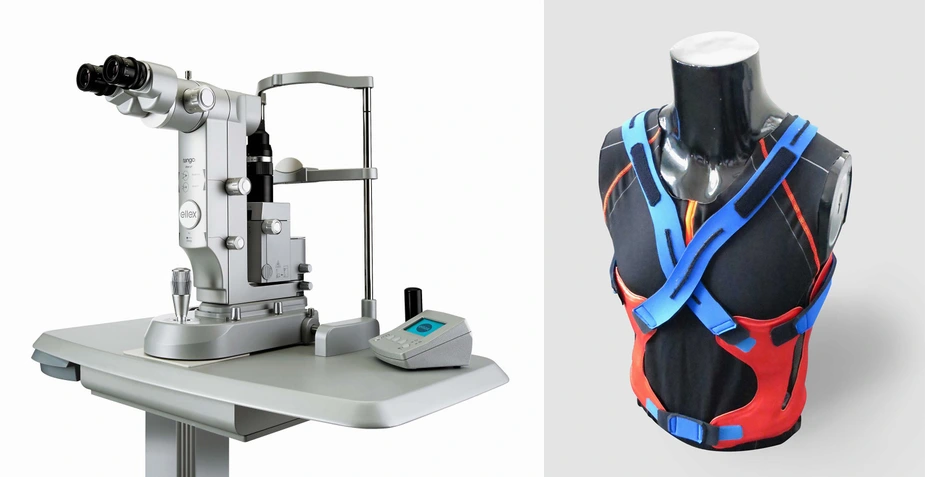Hightech for eyes and back
Medical engineering “Made in Adlershof”
Where the eyes are concerned, the greatest caution is needed, for instance in the treatment of glaucoma that gradually restricts the field of vision. About one in ten sufferers lose their eyesight. By developing gentle methods, the company Ellex founded in Australia in 1985 has evolved into the leader in ophthalmologic technologies. And technologies developed in Adlershof are also to aid in the treatment of back complaints.
“Today, more than 20,000 Ellex lasers and ultrasonic devices are being used in the treatment of eye diseases,” said Bernhard Lobmayr. This economist is the manager of Ellex Deutschland GmbH, which moved into the Adlershof Photonics and Optics Centre (ZPO) in 2014. At present, seven employees are responsible for sales and services. Lobmayr is confident: soon, they could be assuming more responsibilities, for instance in the development of products and therapies.
Its short pulse lasers have launched Ellex to the world leadership in the treatment of glaucoma and (successive) cataracts. The company has proved particularly innovative in its fight against age related macular degeneration. “In recent years, retinal treatment has benefited greatly from the minimally invasive laser therapy 2RT, or retinal rejuvenation therapy,” explained Lobmayr. Here, extremely short light pulses induced the healing process without injuring the retinal sensors.
The Berlin Fraunhofer Institute for Reliability and Microintegration (IZM) researches into the prevention of back complaints. This developed the “intelligent” jacket “CareJack”, a project sponsored by the German Federal Ministry of Research to assist nursing staff in physically demanding activities, thereby minimising the risk of back complaints. An orthopaedic device bristling with modern technology – light, flexible, and convenient – supports muscular activities where needed and stabilises the back. Also, it emits alarms when it detects wrong movements.
Involved in the project are eight partners from industry, clinics, rehabilitation, and nursing care. These also include two Berlin Fraunhofer Institutes (FHI), the IPK for production systems and design technology and the IZM. These designed the circuitry and researched into the optimal integration of sensors and the precise control of actuators.
“The jacket must be cleaned like normal clinical clothing, so great importance was attached to robust data capture and stable electronic networking,” explained Ulf Oestermann of the IZM. The plan is to assemble each of the systems like miniaturised actuators, flexible PCBs, and sensors into a prototype as early as 2015. After that comes the field test and then series production, which is expected to be launched in one to two years.
By Paul Janositz for Adlershof Special
